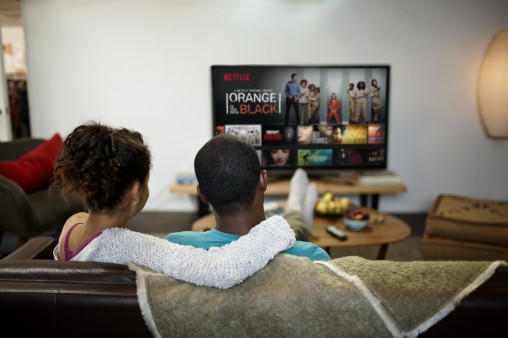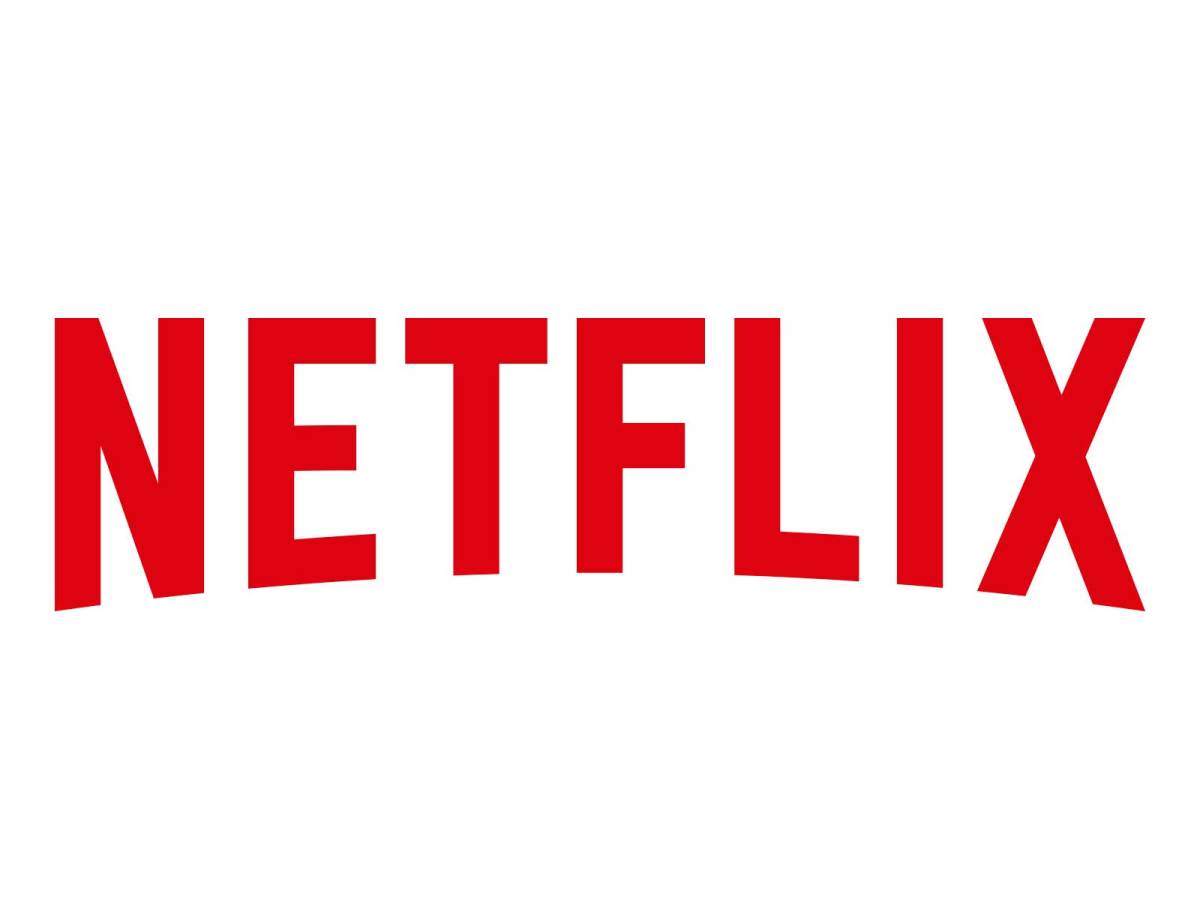
- Netflix launched in the United States as a physical DVD delivery service in 1997. It has since expanded to Europe and South America.
- The company is publicly traded on the NASDAQ in New York and had revenues of $4.37 billion for the 2013 financial year.
- In May 2014, Time magazine reported Netflix streaming alone accounts for around one-third of peak wired internet traffic in the United States.
United States video streaming service Netflix today confirmed it would be officially launching in Australia (and New Zealand) in March 2015. This news was confirmed by the company’s communications team after many months of speculation and, it is fair to say, pleading from antipodeans for the service.
Netflix offers a curated selection of films and TV shows, including original programming like House of Cards, BoJack Horseman, Orange is the New Black and the fourth season of Arrested Development, across a range of connected devices for a monthly fee, which in America starts at US $7.99 (AU $9.15). Netflix hasn’t revealed how much the service will cost in Australia, though it is believed it will cost around $10-to-15 per month.
“Internet-connected users in Australia and New Zealand will be able to subscribe to Netflix and instantly watch a curated selection of popular movies and TV shows in high-definition or even 4K where available,” Netflix said in a statement.
“With a constantly improving user experience, advanced personalisation technology and a curated selection of films and TV shows, members are able to create their own viewing experience and can easily discover new favourites, while reconnecting with popular characters and stories.
“Netflix members with a broadband connection can watch whenever, wherever they like, and on any Netflix-ready device they choose. Members can start watching on one device, pause, and then pick up where they left off on another, at home or on the go. Its easy to sign up for a 1-month free trial and cancel anytime.”
The flexibility and device agnosticism of Netflix have been significant reasons for its success in other regions. The product is available on desktop PCs and Macs, on nearly all smartphones and tablets, on gaming consoles and Smart TVs, and on internet TV-enablers like Apple TV.
According to unverified sources often quoted in the mass media, Netflix has approximately 200,000 subscribers based in Australia, circumventing its geoblocking restrictions by using virtual private networks, which have nebulous legality. Netflix coming to Australia means that these users can theoretically end their access by stealth and become customers of the Australian service, though many may choose not to, as the Australian Netflix will have a separate cache of programming to the American version, based on the different content deals it has secured with production and distribution companies.
So what effect will Netflix coming to Australia have on the retail consumer electronics industry? Commentators and fans have previously suggested that Netflix’s arrival could be a viable alternative to Foxtel’s near-monopoly on expansive content delivery. There have been suggestions in the media, including from respected consumer advocacy magazine Choice, that Foxtel is too expensive and is ripping off Australian customers and that if Netflix were to come to Australia, it would provide much needed competition. This comparison is specious, however, because Foxtel, which is a product sold at stores like Harvey Norman and JB Hi-Fi, is a first-run content provider, offering premium TV on the same day it airs in the United States (and other regions of origin), along with millions of hours of TV and live sports, while Netflix is what’s called a ‘library service’, comprised of older series and films that have already completed their TV run. Heretofore, premium US TV channel HBO has not been a partner of Netflix, meaning popular programs like Game of Thrones, Girls, Veep and The Newsroom have not been available to Netflix subscribers.
Users thinking they can replace Foxtel with Netflix are likely to be disappointed by the comparative paucity of content and sales staff are advised to inform customers of this reality when discussing the two services.
The second impact Netflix can have on the local market is on sales of the connected devices that can access Netflix, specifically Smart TVs. Although a lot of money has been invested in developing and marketing internet-enabled TVs, and sales of such models have been growing, the actual use of the internet features has been sluggish. Sources within the Australian TV industry say Smart functionality has been more of an incidental acquisition, meaning the functionality is entering people’s homes but only because customers are buying the best Full HD and Ultra HD TVs, which happen to have Smart TV. Earlier this year at Panasonic’s Smart TV launch, I quizzed their the Japanese brand’s TV team on how many customers were actually connecting and accessing the Smart features and my questions were deflected: the impression given was that the percentage was underwhelming, and this tracks with the information emanating from the other TV brands.
Jumpei Sugimoto is the head of TV at Sony Australia. He confirmed Sony’s range of Bravia Smart TVs would be Netflix compatible and that the service would be a welcome addition to the company’s existing internet TV offering.
“Netflix and other soon to be launched local services will be a great addition to the existing 20-plus specialised channels already available on Sony’s Smart TVs. With Netflix’s high penetration in other markets and some Australians already accessing the service via VPN, the launch is certain to extend the awareness of entertainment accessed via the internet on Smart TVs.”
We know that Netflix has appointed local creative, digital and PR agencies to assist in its Australian entry and the signs are that this will be a very thorough marketing campaign to drive brand awareness and take-up. The local TV market could be an indirect beneficiary of this, with premium brands all expected to carry Netflix on their Smart TV platforms. Samsung, Sony, LG and Panasonic all have Netflix available to their US customers and LG even offers 6- and 12-month free subscriptions as a gift-with-purchase on selected models.
On the second tier, brands like TCL, Toshiba and Hisense heavily promote their Netflix-compatibility in the United States and this is expected to replicated in Australia. It would not surprise to see TV brands — and LG is the most likely candidate based on overseas activity — launch their 2015 TV ranges by gifting Netflix subscriptions to their customers.
Wannabe Netflix customers that don’t own a Smart TV and do not want to upgrade will look to adjunct products like Apple TV to access the service, or to Google’s Chromecast device to stream content from their computer, smartphone or tablet, to their big screen television. Kaiser Baas has a similar device called the ScreenShift.
Of course, Netflix is also available on smartphones and tablets — there is no requirement to watch the content on an actual TV — and many consumers, especially the younger crowd, are content to watch their favourite shows on smaller screens, especially while commuting. This could see a boost in the popularity of the larger sized smartphones, the so-call phablets, such as Samsung’s Galaxy Note range, Sony’s Xperia Z3 and Apple’s recently released iPhone 6 Plus. With Netflix streaming in HD (and even 4K where available), tablets with insanely good resolution are set to benefit. Netflix is available on iOS, Android, Windows Phone and Kindle Fire smartphones and tablets.
While Netflix has a lot of brand traction in the content streaming market, it is not the only player. Earlier this month, Channel Nine and Fairfax launched its joint venture streaming service, called Stan, while Foxtel also has an offering named Presto. These both compete with the pre-existing Quickflix, which has been suffered from low consumer take-up and board infighting since launching in 2003. Where Netflix trumps these rivals is in brand cachet: it receives enormously positive coverage from the populist consumer tech sites, which have crowned it with near-messianic attributes, claiming it is the both the antithesis to Foxtel’s evil pricing structure and a panacea for illegal downloading. The truth is much more prosaic: Netflix is fine product and it stands the best chance of gaining the market share required to positively impact the retail consumer electronics industry.
Opinion/Analysis
I expect Netflix to offer a good service at a fair price, and the publicity it generates will benefit the whole content streaming market, indirectly promoting Stan, Presto, Quickflix and whatever other ones launch in meantime. This will have a positive impact on sales of devices that support Netflix, which is fantastic for the industry.
Not everyone will be happy though. Expectations have been set so high for the service, however, viz this Tweet by Choice…
Netflix is coming to Australia in March 2015! http://t.co/Z5yMVAIz1b Prices & full lineup to come… pic.twitter.com/I7eZaHWHHR
— CHOICE (@choiceaustralia) November 19, 2014
…that many consumers will be disappointed that it isn’t the be-all and end-all of content consumption. Sports fans will still require a Foxtel subscription, as will those that love watching premium programming as soon as it airs in the United States or the United Kingdom. Those that love local reality programming and news and current affairs will still need to switch on the free-to-air TV networks and then there will be shows that simply aren’t shown anywhere, which will no doubt cause some people to illegally download them.

